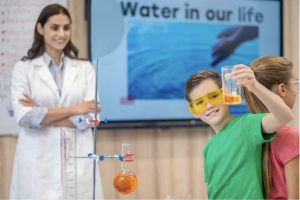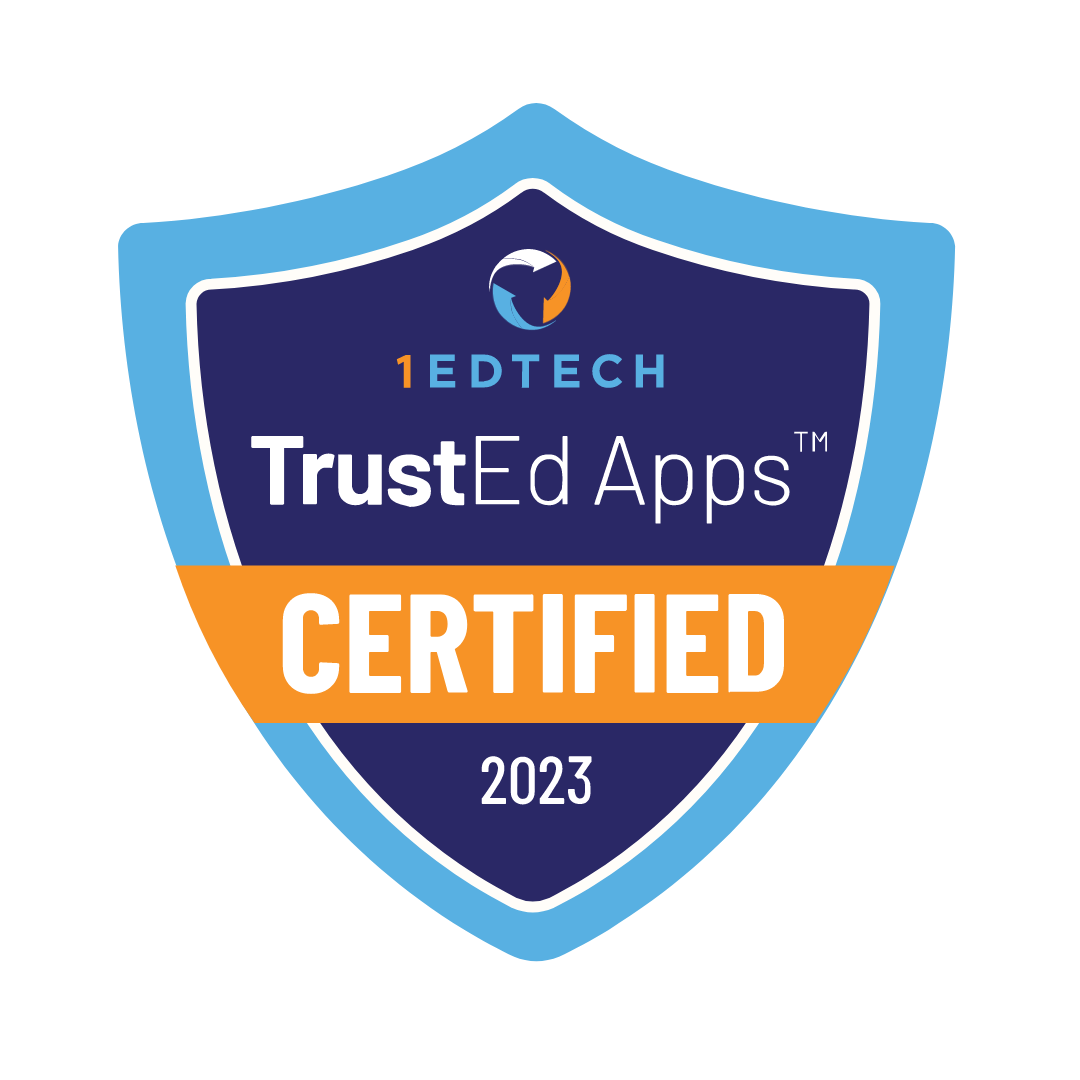Contents
- 1 What Is an 8th Grade Physical Science Curriculum?
- 2 How to Navigate Through an Online 8th Grade Physical Science Program?
- 3 What Units Are Included in 8th Grade Physical Science?
- 4 How Is Assessment Conducted in an Online Physical Science Curriculum?
- 5 What Resources Are Available for Teachers and Students in Middle School Physical Science?
“Preparing 8th Grade Students to Excel in Physical Science: Hands-On Physics (HOP)!” by Dizbay-Onat and Wyss shows how hands-on learning helps students understand physics better.

The 8th Grade Physical Science curriculum is a guide for how students learn. The quality and balance of this plan play a big role in how successful kids’ education will be.
What Is an 8th Grade Physical Science Curriculum?
“I want them to see science as something that’s familiar, part of their lives, and useful—and not intimidating”
Sara Donnelly, Rowland Hall

Let’s take a closer look at what this curriculum includes.
Overview of the Physical Science Curriculum
This curriculum introduces children to one of the most important disciplines. Students learn about various forces in our world, such as gravity. Kids become familiar with the concept of energy, along with many other terms, formulas, and how to work with them. The advantage of this curriculum is the strong balance between theory and practical activities. These activities include interesting experiments, discussions, and different games.
Key Objectives of 8th Grade Physical Science
The main goal of this science is to explain key terminology to children in simple terms and help them apply it in real life. Many physics concepts are used in everyday situations, and students need to master this as part of the subject.
Children get academic knowledge and develop personal qualities. Discussions teach kids to listen to others, express their opinions, and work in a team. Every child learns to rely more on facts when building arguments. Students improve their problem-solving skills as they deal with different problems.
Importance of Understanding Matter and Energy
Matter and energy are topics receiving a lot of focus. These subjects are fundamental to many others. Matter helps students understand how the objects around us are structured. Energy explains how these objects move.
Students engage in many interesting observations and experiments to better understand how matter and energy work. Understanding these topics makes it easier to get future concepts since they are interconnected and explain each other well.
Here are some tips on how students can navigate this program successfully.

Students have a better understanding of what to expect when they review the main pages of the course. These pages outline the course content. Kids learn which topics they will cover, how their knowledge will be assessed, and whether there are links to additional resources.

Engaging with Interactive Content
Online learning provides students with a lot of content formats. This diversity helps students with different learning styles achieve better results. Visual learners can focus more on videos. Auditory learners can benefit from listening to audio recordings. Kinesthetic learners will enjoy interactive tasks and games.
Resources for Additional Learning
Using additional materials allows students to dive deeper into the subject and spend time engagingly by solving problems or exploring content in a game-like format. Students read articles from experts to get better insights into a specific topic. Kids watch additional videos to better understand how to conduct experiments and use other materials to enrich their knowledge. Many of these additional resources serve as excellent practice tools for test preparation.
What Units Are Included in 8th Grade Physical Science?
We will review the required units included in 8th-grade Physical Science to help students better understand what to expect and prepare for.

Exploring Properties of Matter
Matter makes up many of the objects surrounding us. Matter is the basic unit for many other things, like molecules. Students in this course learn different properties and states of matter. Kids learn about solid matter and its characteristics. They also explore liquid and gaseous states of matter and understand how to work with them.
Students master basic properties, such as density, and solve various problems related to these properties. Having this knowledge helps kids not only in physics but also in other subjects, like biology.
Understanding Energy and Motion
Energy helps us understand how things work, why certain objects move, and much more. Students learn about different types of energy, such as kinetic energy. They explore why these types of energy work the way they do and what they are responsible for. Kids begin solving problems related to energy properties, such as acceleration. Teachers design many interesting tasks helping students enjoy learning and understand how energy works in real life.
Introduction to Electricity and Magnetism
Students begin exploring the basics of electricity and magnetism. These two concepts are part of our everyday lives, and teachers introduce children to their detailed nuances. Kids conduct experiments to understand how electricity works, study conductors, and learn about other elements involved in electrical circuits. Students perform magnetism experiments to get its properties. Students move on to the combined concept of electromagnetism once they have a solid understanding of both topics.
How Is Assessment Conducted in an Online Physical Science Curriculum?
Here are some important things students should know about the assessment process in this course.

Types of Assessments in 8th Grade
An online curriculum allows for the use of diverse assessment methods. Teachers can utilize comprehensive tests or written assignments to evaluate knowledge of an entire module. Students take small quizzes after completing a topic. Kids also engage in many interactive tasks, games, and experiments. This variety of assessments makes learning more interesting and helps students better absorb the material.
Evaluating Student Understanding of Key Concepts
Some students memorize material instead of understanding it. It’s important for teachers to check comprehension. Teachers can do this by giving students non-standard problems or questions requiring thoughtful answers in their own words. Feedback from teachers on students’ responses helps them find the right approach to learning and understand the material better.
Feedback Mechanisms for Improvement
Feedback helps students understand what they need to focus on and work on effectively. Teachers provide regular feedback so students can address issues promptly. The type of feedback varies depending on the task and topic. Some cases involve oral feedback. Other cases require written responses. Online learning often uses specialized platforms where students can receive continuous automated feedback.
Teachers at Legacy Online School aim to provide detailed feedback to every student. Our teachers guarantee kids understand their problems, feel supported, and achieve their best results.
What Resources Are Available for Teachers and Students in Middle School Physical Science?
Teachers and students use these resources for effective teaching and learning.

Printable Materials for Enhanced Learning
Many students remember material better when using objects they can touch. This interaction is especially beneficial for children with a kinesthetic learning style or strong motor memory. Teachers can print different guides and worksheets for students. This approach is particularly useful for experiments and active games.
Online Tools for Collaborative Learning
Students develop personal skills, such as interacting with others, when they actively collaborate. Online tools are a great way to organize this collaboration. The advantage of online tools is they can be used at a convenient time and don’t require physical attendance to a special place. This gives kids enough freedom to create a comfortable workspace for themselves. An example of such an online tool is Google Classroom.
Periodic Table and Other Essential Resources
Online platforms offer students many resources they can use virtually or in printed form. The periodic table helps them visualize elements and use them when solving problems. The convenience of an online periodic table is many websites and apps provide detailed information about each element. Students can also use different additional materials, such as guides for physics and math formulas, and much more.











